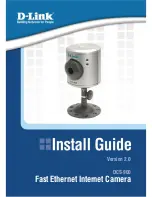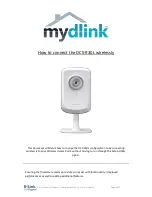
MFR
August 2020
Visual Engineering
Video solutions. Integrated
visualengineering.co.uk
Page 30
It is possible to connect multiple instances of a video player to a single camera.
There is however a maximum limit at which the encoder bit rate can be set to whilst streaming
video to multiple viewers using the unicast method of transmission. Bit rates set to a value greater
than the allowed maximum value for a given number of clients will result in video breakup.
With the camera set to constant bit rate mode, the table below describes the maximum bit rate the
camera can be set to for a given number of connected viewing clients using the unicast method of
network transmission.
Multiple Viewers
Client Count
Maximum Camera Bit rate
1
10Mb/sec
2
8Mb/sec
3
6Mb/sec
4
4Mb/sec
Multiple Viewing
The camera is capable of transmitting a video stream over either UDP or TCP transmission
protocols. The benefits of each protocol is particular to the specific deployment of the camera.
In general terms UDP is a more efficient method which carries less overhead than TCP but lacks
some reliability as not all video frames are required to be received in full.
For example, if the camera is used in a scenario where the video is being monitored in real time
and the stream is being sent across an RF link that is susceptible to break up, UDP would be the
best choice. The reason for this is that re-sending any missed video packets using the TCP method
will result in out of date video frames being reconstructed, which will ultimately result in an
increase to the video latency.
If this checkbox is
ticked VLC will request
that the camera sends
video packets over
TCP, otherwise it
will request that the
camera sends video
packets over UDP.
TCP Vs UDP
TCP/UDP in VLC








































